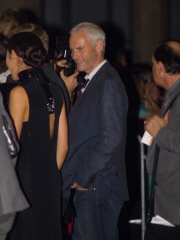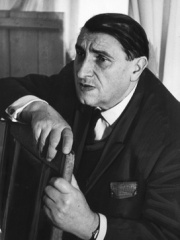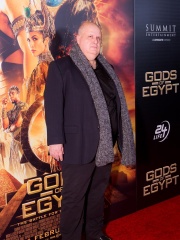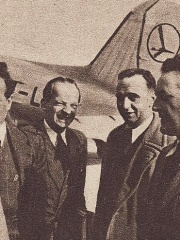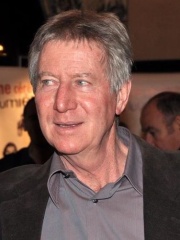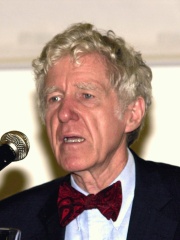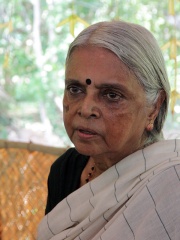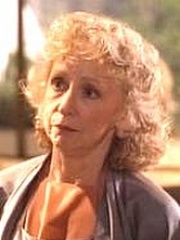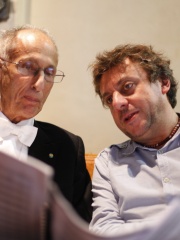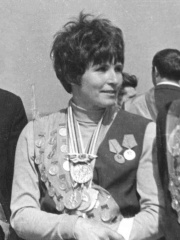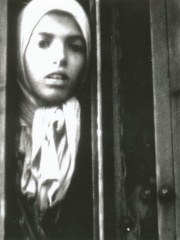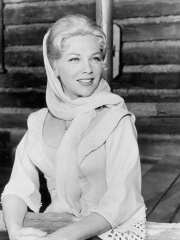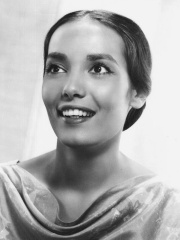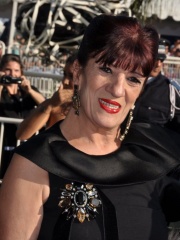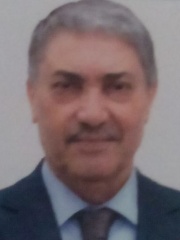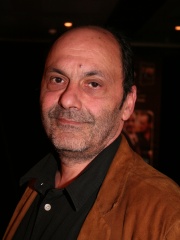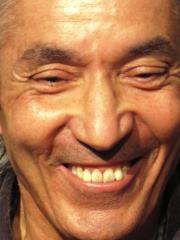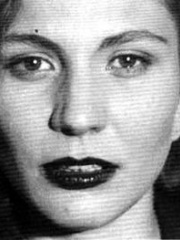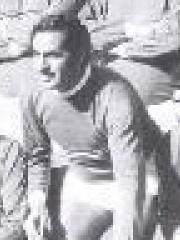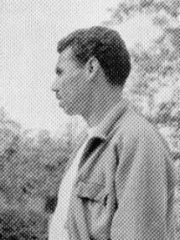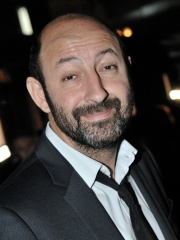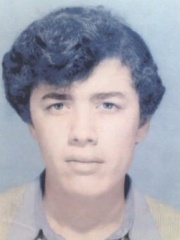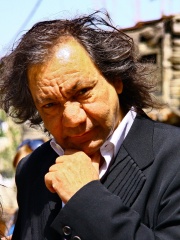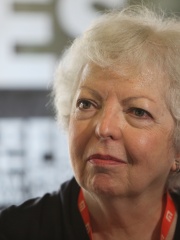FILM DIRECTOR
Mohammed Lakhdar-Hamina
1934 - Today

 Mohammed Lakhdar-Hamina
Mohammed Lakhdar-Hamina
Mohammed Lakhdar-Hamina (Arabic: محمد الأخضر حمينة; born in M'sila in 1934) is an Algerian film director and screenwriter. He is best known for his 1975 film Chronicle of the Years of Fire, which won the Palme d'Or at the 1975 Cannes Film Festival and became the first Arab and African film to win the award. Read more on Wikipedia
Since 2007, the English Wikipedia page of Mohammed Lakhdar-Hamina has received more than 42,420 page views. His biography is available in 15 different languages on Wikipedia (down from 16 in 2019). Mohammed Lakhdar-Hamina is the 882nd most popular film director (up from 937th in 2019), the 110th most popular biography from Algeria (down from 109th in 2019) and the 3rd most popular Algerian Film Director.
Memorability Metrics
42k
Page Views (PV)
49.65
Historical Popularity Index (HPI)
15
Languages Editions (L)
5.32
Effective Languages (L*)
1.71
Coefficient of Variation (CV)
Page views of Mohammed Lakhdar-Haminas by language
Over the past year Mohammed Lakhdar-Hamina has had the most page views in the French wikipedia edition with 8,373 views, followed by English (5,582), and Arabic (4,350). In terms of yearly growth of page views the top 3 wikpedia editions are Haitian (84.03%), Indonesian (58.70%), and Egyptian Arabic (55.70%)
Among FILM DIRECTORS
Among film directors, Mohammed Lakhdar-Hamina ranks 882 out of 2,041. Before him are Ennio de Concini, Elia Suleiman, Martin McDonagh, Ivan Ivanov-Vano, Alex Proyas, and Anthony Harvey. After him are Mitchell Leisen, David Cherkassky, Bob Gale, Mikael Håfström, Jean Grémillon, and Régis Wargnier.
Most Popular Film Directors in Wikipedia
Go to all RankingsEnnio de Concini
1923 - 2008
HPI: 49.72
Rank: 876
Elia Suleiman
1960 - Present
HPI: 49.70
Rank: 877
Martin McDonagh
1970 - Present
HPI: 49.67
Rank: 878
Ivan Ivanov-Vano
1900 - 1987
HPI: 49.66
Rank: 879
Alex Proyas
1963 - Present
HPI: 49.66
Rank: 880
Anthony Harvey
1930 - 2017
HPI: 49.65
Rank: 881
Mohammed Lakhdar-Hamina
1934 - Present
HPI: 49.65
Rank: 882
Mitchell Leisen
1898 - 1972
HPI: 49.62
Rank: 883
David Cherkassky
1931 - 2018
HPI: 49.62
Rank: 884
Bob Gale
1951 - Present
HPI: 49.62
Rank: 885
Mikael Håfström
1960 - Present
HPI: 49.60
Rank: 886
Jean Grémillon
1902 - 1959
HPI: 49.60
Rank: 887
Régis Wargnier
1948 - Present
HPI: 49.58
Rank: 888
Contemporaries
Among people born in 1934, Mohammed Lakhdar-Hamina ranks 295. Before him are Lester R. Brown, Sugathakumari, Anne Haney, Piet Dankert, Claudio Scimone, and John Keegan. After him are Galina Bystrova, Stanley G. Payne, Settela Steinbach, Hamit Kaplan, Joanna Moore, and Anna Kashfi.
Others Born in 1934
Go to all RankingsLester R. Brown
SOCIAL ACTIVIST
1934 - Present
HPI: 49.84
Rank: 289
Sugathakumari
SOCIAL ACTIVIST
1934 - 2020
HPI: 49.81
Rank: 290
Anne Haney
ACTOR
1934 - 2001
HPI: 49.79
Rank: 291
Piet Dankert
POLITICIAN
1934 - 2003
HPI: 49.73
Rank: 292
Claudio Scimone
CONDUCTOR
1934 - 2018
HPI: 49.71
Rank: 293
John Keegan
HISTORIAN
1934 - 2012
HPI: 49.65
Rank: 294
Mohammed Lakhdar-Hamina
FILM DIRECTOR
1934 - Present
HPI: 49.65
Rank: 295
Galina Bystrova
ATHLETE
1934 - 1999
HPI: 49.55
Rank: 296
Stanley G. Payne
HISTORIAN
1934 - Present
HPI: 49.54
Rank: 297
Settela Steinbach
CELEBRITY
1934 - 1944
HPI: 49.51
Rank: 298
Hamit Kaplan
WRESTLER
1934 - 1976
HPI: 49.49
Rank: 299
Joanna Moore
ACTOR
1934 - 1997
HPI: 49.47
Rank: 300
Anna Kashfi
ACTOR
1934 - 2015
HPI: 49.41
Rank: 301
In Algeria
Among people born in Algeria, Mohammed Lakhdar-Hamina ranks 110 out of 213. Before him are Biyouna (1952), Ali Benflis (1944), Jean-Pierre Bacri (1951), Boualem Sansal (1949), Solveig Dommartin (1961), and Rachid Mekhloufi (1936). After him are Abdelaziz Ben Tifour (1927), Kad Merad (1964), Mustapha Dahleb (1952), Lounès Matoub (1956), Islam Slimani (1988), and Mohamed Ben Ahmed Abdelghani (1927).
Others born in Algeria
Go to all RankingsBiyouna
SINGER
1952 - Present
HPI: 50.64
Rank: 104
Ali Benflis
POLITICIAN
1944 - Present
HPI: 50.44
Rank: 105
Jean-Pierre Bacri
ACTOR
1951 - 2021
HPI: 50.35
Rank: 106
Boualem Sansal
WRITER
1949 - Present
HPI: 50.21
Rank: 107
Solveig Dommartin
ACTOR
1961 - 2007
HPI: 50.01
Rank: 108
Rachid Mekhloufi
SOCCER PLAYER
1936 - Present
HPI: 49.77
Rank: 109
Mohammed Lakhdar-Hamina
FILM DIRECTOR
1934 - Present
HPI: 49.65
Rank: 110
Abdelaziz Ben Tifour
SOCCER PLAYER
1927 - 1970
HPI: 49.47
Rank: 111
Kad Merad
FILM DIRECTOR
1964 - Present
HPI: 49.35
Rank: 112
Mustapha Dahleb
SOCCER PLAYER
1952 - Present
HPI: 49.25
Rank: 113
Lounès Matoub
SINGER
1956 - 1998
HPI: 49.09
Rank: 114
Islam Slimani
SOCCER PLAYER
1988 - Present
HPI: 48.98
Rank: 115
Mohamed Ben Ahmed Abdelghani
POLITICIAN
1927 - 1996
HPI: 48.93
Rank: 116
Among FILM DIRECTORS In Algeria
Among film directors born in Algeria, Mohammed Lakhdar-Hamina ranks 3. Before him are Tony Gatlif (1948), and Thelma Schoonmaker (1940). After him are Kad Merad (1964).
Tony Gatlif
1948 - Present
HPI: 56.19
Rank: 1
Thelma Schoonmaker
1940 - Present
HPI: 53.52
Rank: 2
Mohammed Lakhdar-Hamina
1934 - Present
HPI: 49.65
Rank: 3
Kad Merad
1964 - Present
HPI: 49.35
Rank: 4


